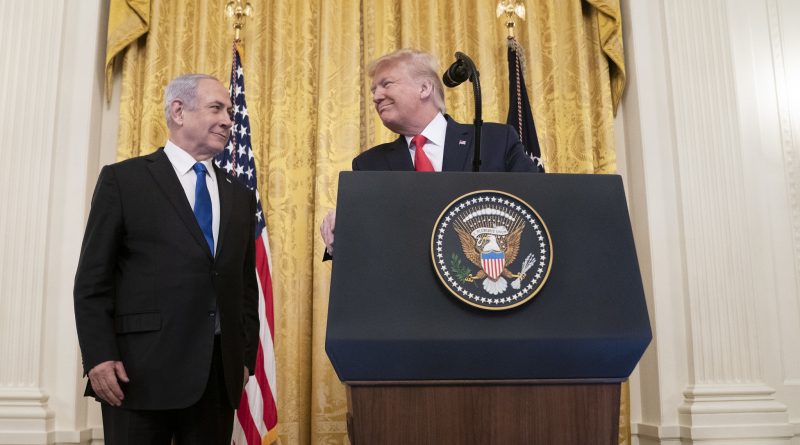The American Peace plan for the Middle East
The long expected American Peace plan for the Middle East has been presented at last. There was a ceremony at the White House in Washington, a lot of applause, handshaking, even music. Very optimistic speeches were delivered and it looked like peace was at hand, if not already achieved.
Behind this plan is American president Trump and his team, backed by some Jewish leaders and dignitaries from the USA and Israeli Prime Minister Benyamin Netanyahu. The document was announced as a last chance for peace – a chance which is never going to repeat itself – sending a clear message that all “participants” of the “peace” process should understand that they have to take it.
And who are the participants? Israelis, of course, led by the right-wing political party Likud, currently in power, together with its coalition partners. Then, there are Americans, led by President Trump and his team, who created the Plan, and some of the Jewish leaders and dignitaries from the USA.
And who is missing? Palestinians are missing. Arab states are missing. Islamic states are missing. Even Egypt, the closest American ally in the Middle East today, is missing, not to mention Turkey, a NATO member.
So, how is this Plan going to work without them? There is no doubt that the creators of the Plan are aware of it, but obviously they believe that all these “missing persons” can join in at a later stage, because they need more time to come to terms with its conditions.
Is this realistic? The Middle East is a very complicated region. Local nations have been struggling for a long time to lead a normal life, which is very difficult to achieve even without interference from the big powers; but there is interference around the clock.
Would peace be more realistic without interference? One can strongly doubt even that. So, interference is obviously needed, but what kind? The one which will give to both sides (Israelis and Palestinians) a political solution with which they can confront the criticism coming from their own people and without whose support the Plan would never be implemented. And if not fully implemented, the whole structure of a future potentially peaceful Middle East would collapse. Then, an economic package has to follow, to resolve many outstanding issues concerning everyday life in the West Bank, in the Gaza Strip, and regarding Palestinian refugees in Arab states.
Is the current Plan created by the American administration a kind of Plan that has a chance to be implemented? One should expect that parts of it will definitely be implemented, but only by those who attended the ceremony at the White House. Americans and Israelis are very interested in implementing whatever they can without the other side. So, the door is open for Israel to speak about the annexation of parts of the West Bank, through the Jewish settlements, and to introduce some security arrangements in the Jordan Valley, when they choose the right moment for it. Moreover, UN Security Council Resolutions will never be implemented and the new Plan is rendering them unimportant parts of International Law.
But what about Palestinians? Probably nothing. The solution offered by the new plan about a four-year interim period is something they already tried in 1993 with the Oslo agreements. They tried and everything was stopped by the killing of then Israeli Prime Minister Yitzhak Rabin. Then, the Palestinian leaders were presented with the possibility to return to Gaza and the West Bank from Tunis, where they formed an Autonomous Authority, Parliament, police force, and they even established a security cooperation with Israel. Now, it is very hard to expect that they will start again to prove to Israelis that they can run a normal country which is not going to be security treat to the Jewish state.
An economic package is, of course, important, but is this too far away from reality? Probably none of today’s Palestinian leaders would be in power to see it working. Unfortunately, as it looks now, a balance was not achieved with the American plan, Palestinians cannot sign it, and their answer could go in the way of more demonstrations, violence, and confrontation. The Arab world, because of its domestic public opinion, could sit aside, without a clear position, trying to preserve their good relations with the USA and peace inside their own countries.
The reality of the Middle East will stay the same. Only with more confrontation.
The opinions expressed in this text are solely the author’s point of view and do not bind the Center for International Studies, its Director or any other researcher.
Donald Trump and Benyamin Netanyahu / Photo by the White House / public domain
![]() This work is licensed under a Creative Commons Attribution-NonCommercial-ShareAlike 4.0 International License.
This work is licensed under a Creative Commons Attribution-NonCommercial-ShareAlike 4.0 International License.




